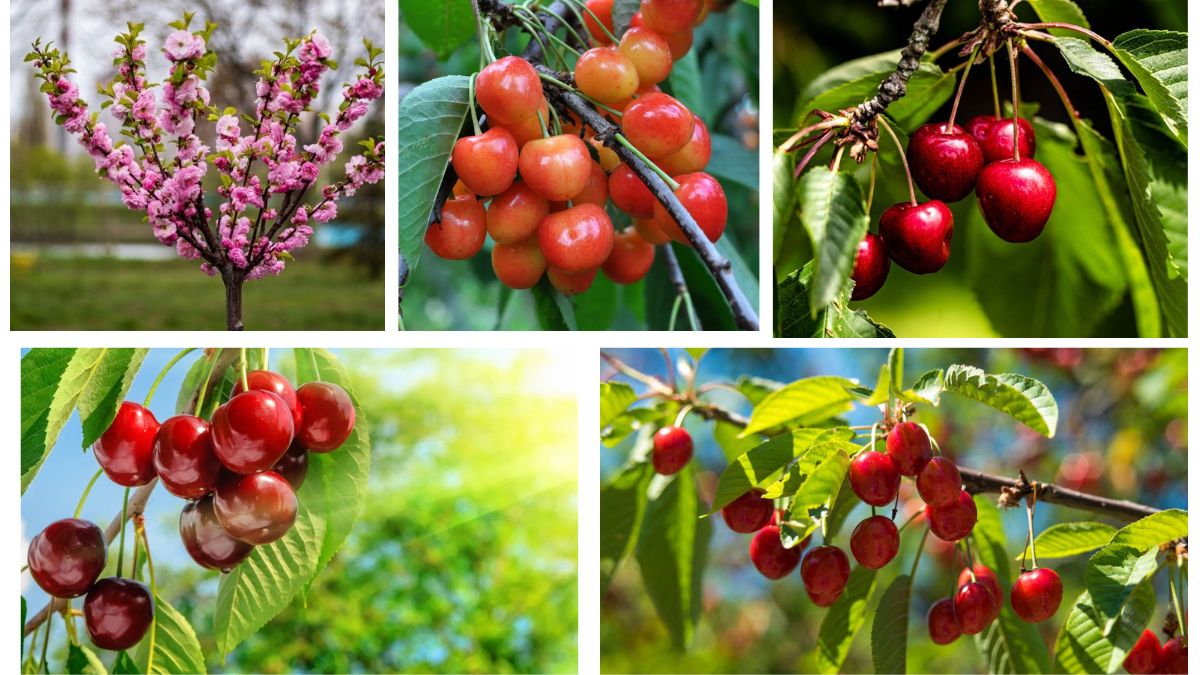Cherry trees (Prunus avium and Prunus cerasus) are beloved for their stunning springtime blossoms, lush summer foliage, and, of course, their sweet or tart fruits. Whether you’re growing a cherry tree for its fruit or ornamental value, proper watering is crucial to its health, growth, and productivity. While cherry trees can tolerate brief dry spells, consistent and appropriate watering encourages robust root development, strong flowering, and bountiful harvests.
However, the question many gardeners ask is: How often should you water a cherry tree? The answer isn’t universal — it depends on factors like the tree’s age, the soil type, climate, and the time of year. In this comprehensive guide, we’ll explore how to properly water cherry trees throughout their life cycle and across the seasons, along with practical tips for ensuring your tree thrives for years to come.
Why Is Proper Watering Important for Cherry Trees?
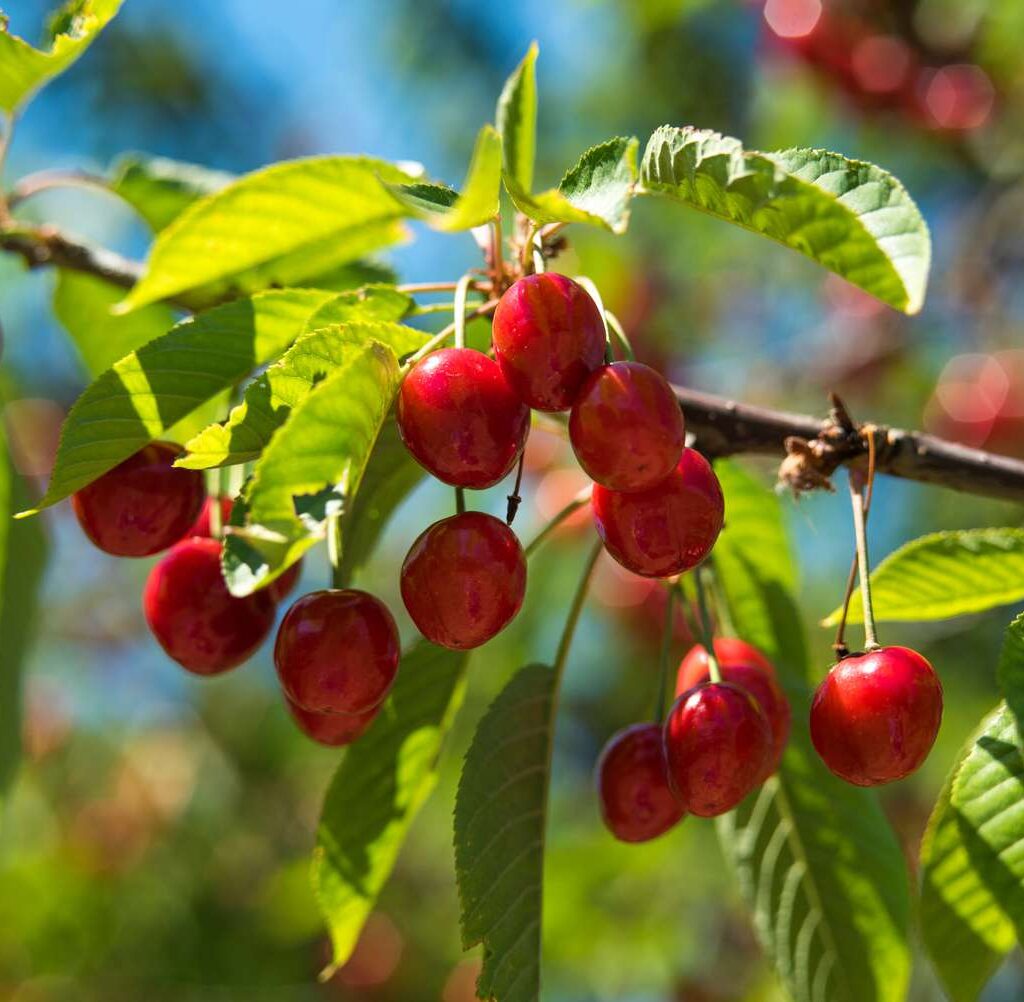
Water serves several essential functions in a cherry tree’s development:
- Supports photosynthesis by transporting nutrients throughout the plant.
- Maintains leaf turgor, keeping leaves firm and healthy.
- Aids in flower and fruit development.
- Helps regulate the tree’s temperature during hot weather.
- Prevents water stress-related issues like leaf scorch, fruit splitting, and premature fruit drop.
Cherry trees have moderately shallow root systems, which makes them more sensitive to fluctuations in soil moisture than some other fruit trees. Ensuring a balanced, consistent watering schedule is vital to avoid stress and disease.
How Often Should You Water a Cherry Tree?
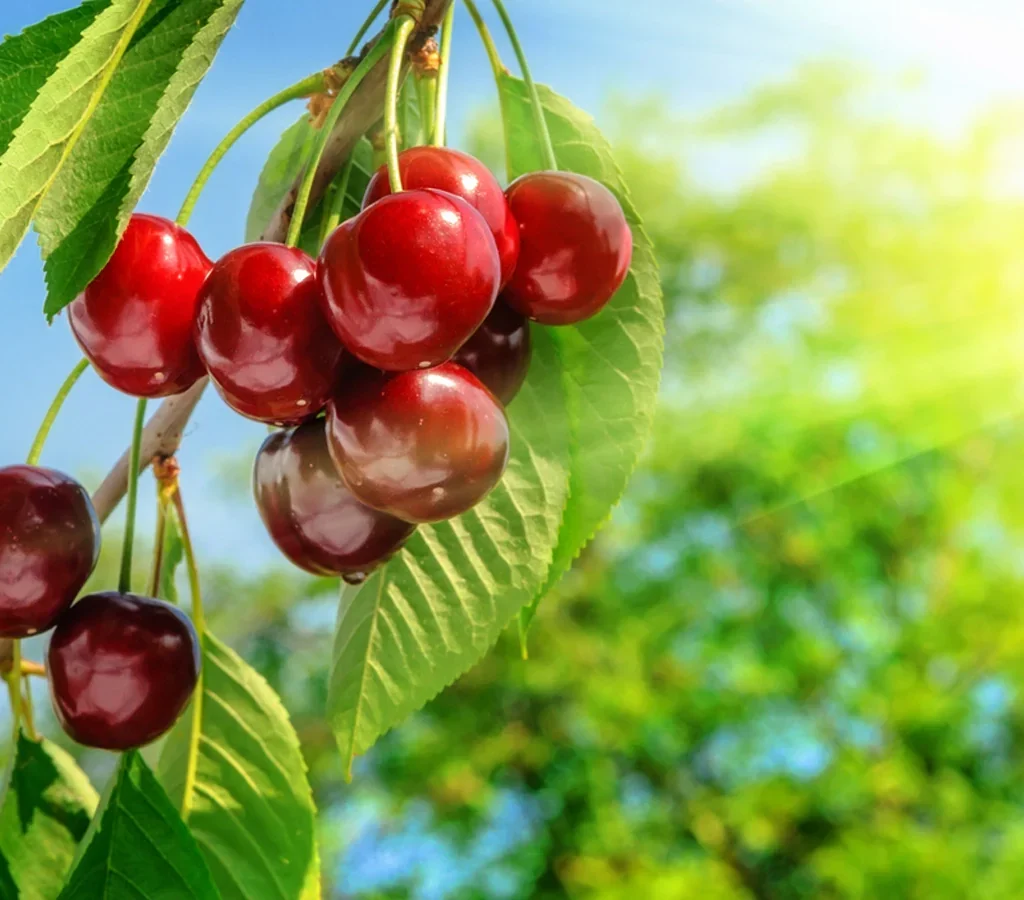
The frequency of watering a cherry tree depends on several factors, including the tree’s age and season:
| Tree Age | Watering Frequency |
|---|---|
| Newly planted (first year) | Every 2–3 days initially, then 1–2 times a week |
| Young (1–3 years) | Every 5–7 days, adjusting for soil moisture and weather |
| Mature (3+ years) | Every 7–14 days during dry periods |
| Fruiting season | Increase frequency to maintain consistent soil moisture |
| Dormant season (winter) | Water sparingly, only during extended dry spells |
Seasonal Watering Needs for Cherry Trees
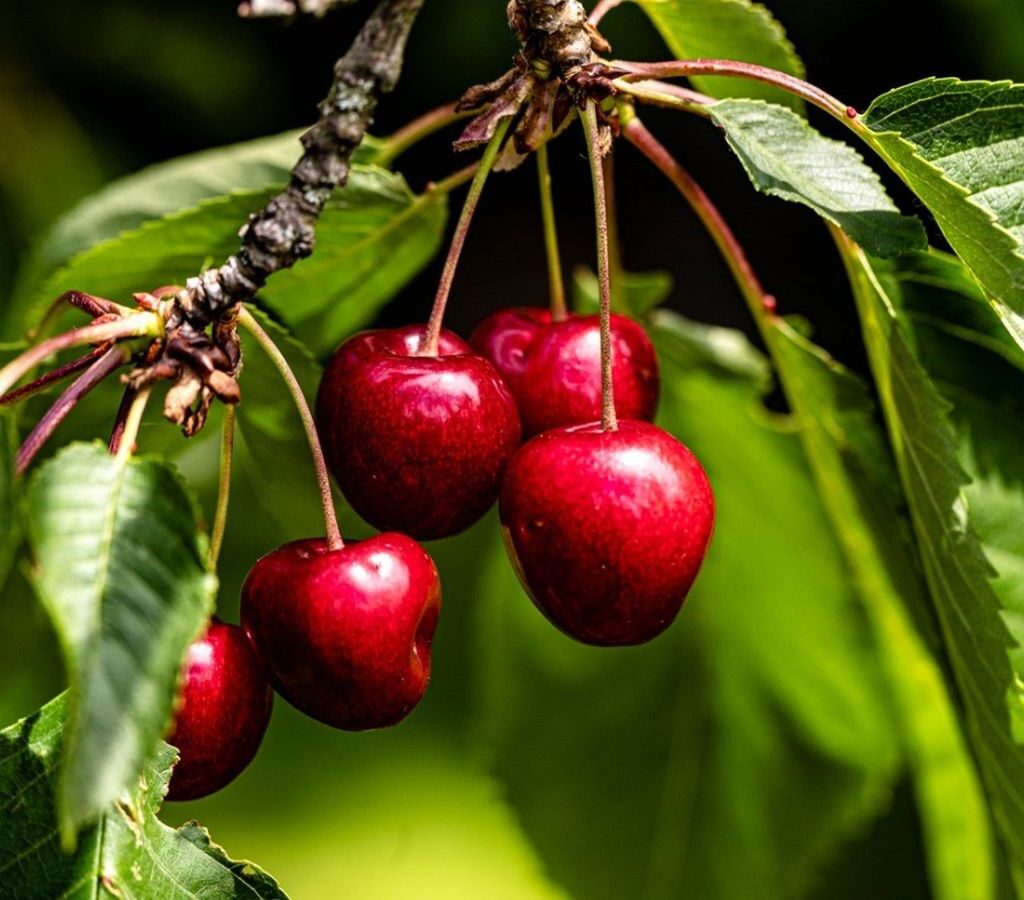
Spring
- As buds break and flowers emerge, ensure the soil remains evenly moist.
- Water deeply once or twice a week, depending on rainfall.
- Adequate moisture during flowering is crucial for fruit set and flower health.
Summer
- This is the most water-demanding period for cherry trees.
- Increase watering to once every 5–7 days for mature trees.
- In extreme heat or windy weather, water every 3–5 days to prevent leaf scorch and fruit splitting.
- Consistent moisture prevents fruit drop and poor fruit quality.
Autumn
- As growth slows and fruiting ends, gradually reduce watering frequency.
- Water every 10–14 days in dry conditions to keep the soil slightly moist.
- Avoid overwatering as the tree transitions into dormancy.
Winter
- Dormant cherry trees require minimal water.
- In dry, frost-free areas, water once every 3–4 weeks if no rain occurs.
- Avoid watering when the soil is frozen or saturated to prevent root damage.
How Much Water Does a Cherry Tree Need?
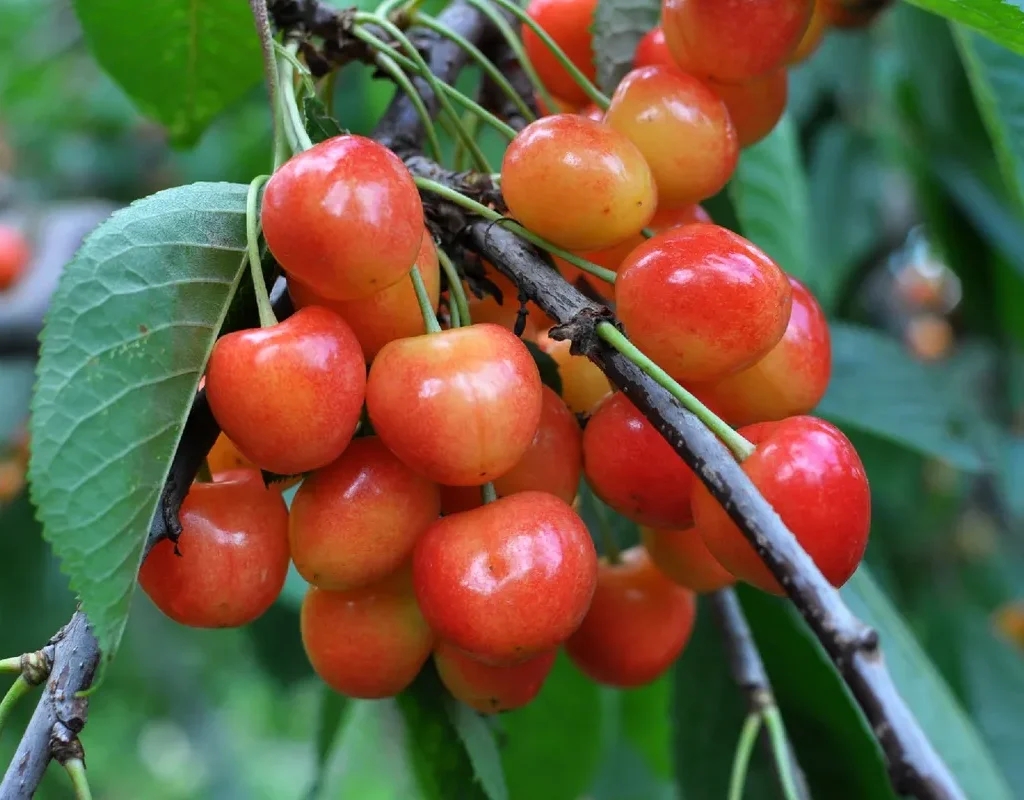
Water quantity varies depending on tree size and environmental conditions:
General Guidelines:
- Newly planted trees: 10–15 liters (2.5–4 gallons) per watering.
- Mature trees: 50–100 liters (13–26 gallons) per session during dry periods.
- During fruiting: Keep soil moist to a depth of 18–24 inches.
- Container-grown cherry trees: Water when the top 1–2 inches of soil feel dry.
Deep watering promotes the growth of deeper, more resilient root systems and reduces the tree’s vulnerability to drought.
Watering Cherry Trees in Containers
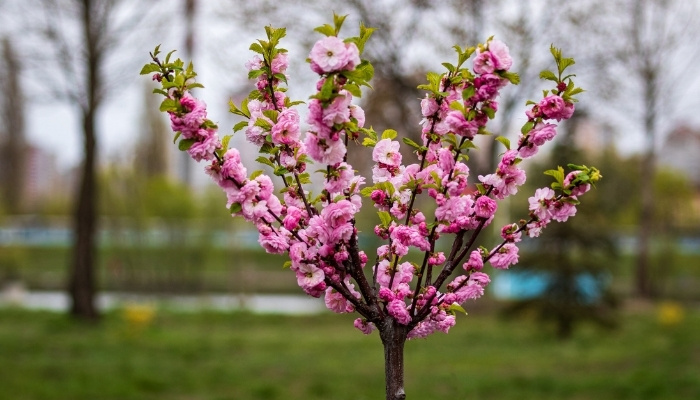
Cherry trees grown in containers dry out faster than those planted in the ground.
Care tips for container-grown trees:
- Check soil moisture daily during warm months.
- Water when the top 2 inches feel dry.
- Ensure containers have adequate drainage.
- Avoid letting water collect in saucers beneath the container.
In peak summer, container-grown cherries may need watering every day or every other day.
How Soil Type Affects Watering Frequency
The soil’s structure determines how often you’ll need to water.
| Soil Type | Watering Frequency |
|---|---|
| Sandy soils | Drain quickly; water more frequently |
| Loamy soils | Hold moisture well; water moderately |
| Clay soils | Retain water longer; water less often |
Improve heavy clay soils by mixing in organic compost and sand to enhance drainage, as cherry trees are highly susceptible to waterlogged roots.
Climate and Weather Considerations
In hot, dry, or windy regions:
- Increase watering frequency during droughts and heatwaves.
- Mulch generously to conserve soil moisture and moderate soil temperatures.
In humid or rainy areas:
- Reduce watering frequency.
- Always check soil moisture before watering to prevent waterlogging.
Best Time of Day to Water Cherry Trees
The most suitable times to water cherry trees are:
- Early morning: Allows water to reach roots before midday heat increases evaporation.
- Late afternoon: If mornings are missed, but avoid evening watering as it can promote fungal diseases like leaf spot and blight.
Benefits of Mulching for Cherry Trees
Mulching offers numerous advantages:
- Conserves soil moisture.
- Regulates soil temperature.
- Reduces weed competition.
- Improves soil texture and organic matter.
Recommended mulch materials:
- Shredded bark
- Straw
- Dried leaves
- Compost
Apply a 2–4 inch layer around the base of the tree, ensuring it stays 6–8 inches away from the trunk to prevent fungal issues.
Signs of Overwatering and Underwatering
Signs of Underwatering:
- Wilting or drooping leaves.
- Dry, cracked soil.
- Premature fruit drop.
- Small, shriveled fruits.
- Browning leaf edges.
Signs of Overwatering:
- Yellowing leaves, especially at the lower branches.
- Persistent wet, soggy soil.
- Root rot (dark, mushy roots).
- Fungal diseases like gummosis (sap oozing from the bark).
Pro Tip: Use a soil moisture meter or check soil 4–6 inches deep — if it’s dry at that depth, it’s time to water.
Common Watering Mistakes to Avoid
| Mistake | Effect | Solution |
|---|---|---|
| Frequent, shallow watering | Shallow root development, drought stress | Deep, infrequent watering |
| Overwatering during dormancy | Root rot and fungal issues | Reduce winter watering |
| Watering during midday heat | High evaporation, ineffective | Water early morning |
| Ignoring soil type | Uneven moisture levels | Adjust watering to soil conditions |
When to Reduce or Stop Watering Cherry Trees
After fruit harvest:
- Reduce watering frequency as the tree begins to prepare for dormancy.
- In dry climates, occasional deep watering prevents stress and root dehydration.
In winter:
- Water only during extended dry periods when the ground is not frozen.
Conclusion
Watering is a foundational element of cherry tree care that significantly influences tree health, blossom vitality, and fruit quality. By adjusting your watering habits according to tree age, soil type, weather, and season, you can cultivate a tree that not only thrives but also produces beautiful blossoms and delicious fruit for years to come.
Prioritize deep, consistent watering during the growing and fruiting seasons, mulch generously to conserve moisture, and monitor soil moisture to avoid the dangers of both over- and under-watering.
With careful attention and thoughtful watering, your cherry tree will reward you each year with a display of stunning spring flowers and a generous harvest of juicy, flavorful cherries.
